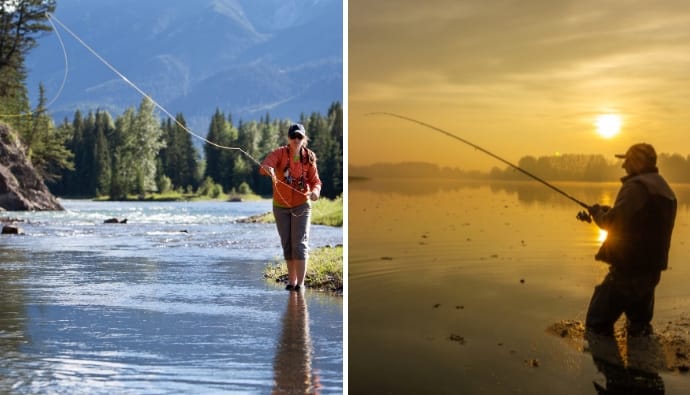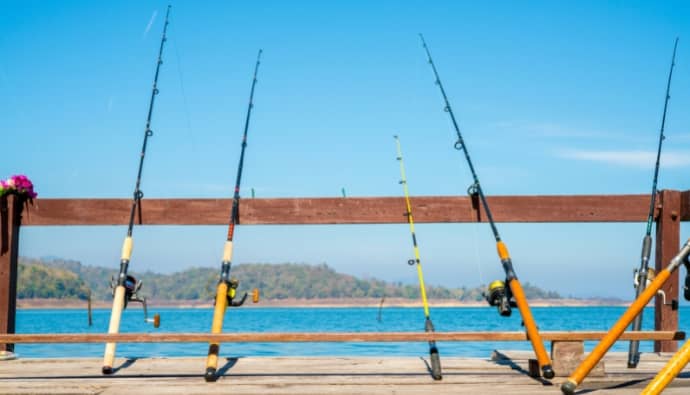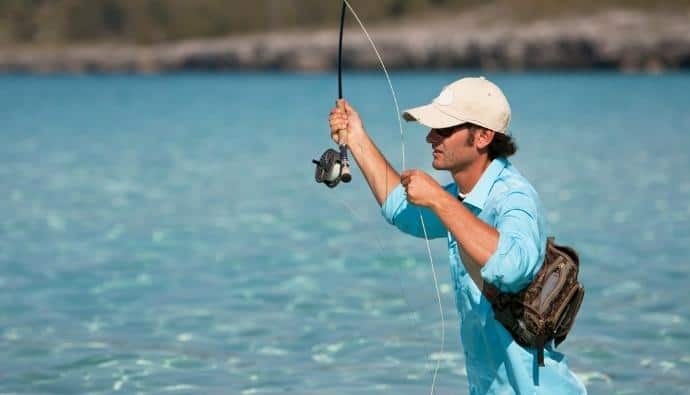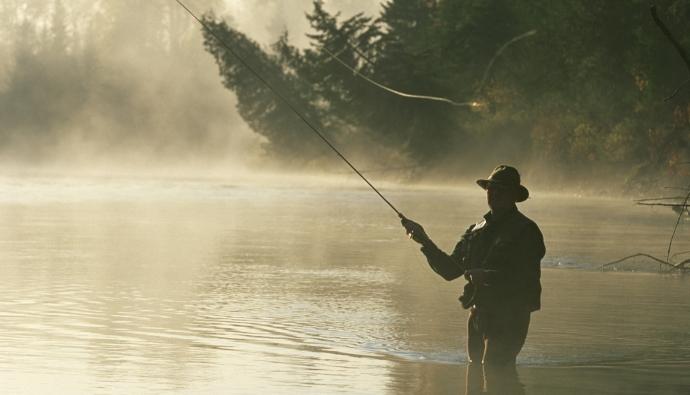The bluegill is one of the most numerous fish in the United States. Although they may go overlooked by other anglers, catching bluegills is enjoyable and relatively simple.
Fly fishing for bluegills is an awesome experience because these small but tenacious fish will put up a good fight. And so, you have to be prepared and be familiar with some things.
This article is all you need to help you catch your first bluegill!
Where to Fly Fish for Bluegill?
Bluegill may be found in most lakes and ponds alongside warm-water species such as bass, pike, perch, and catfish. They are also often seen in big or slow-moving warm-water rivers. So, they are pretty much everywhere!
However, to catch bluegill easier, you’ll need to search for a specific area of the lake or pond. Here are some starting points for your bluegill hunt:
Near drop-offs, bars, and points
Look for areas that move from shallow to deep water. Areas like these are ideal since they provide bluegills with access to food in the shallows while also providing a fast escape to the safety of deeper water.
Bluegills cluster near bars and points because they must navigate these obstacles as they travel across the pond or lake.
Water lilies and weed lines
Bluegills feed on aquatic insects and vegetation. Water lilies and weed lines in the water act as breeding habitats for the bugs and a continuous supply of nourishment for bluegills.
Trees with overhanging branches
Bluegills are at the bottom of the food chain and depend on overhead cover to avoid flying predators.
And so they are very fond of terrestrial insects such as ants, beetles, spiders, and flies which fall out into the water, where hungry bluegills quickly slurp them up.
You’ll need to fine-tune your throwing to slip a fly beneath all those branches, but locating an overhanging tree may be a great bluegill resource.
On the substratum of the lake bottom
Bluegill will be attracted to various bottom substrates, including rocks, gravel, mud, clay, and silt.
On shallow flats looking for spawning beds
Paddle around the shores of a bluegill lake, and you’ll see a multitude of saucer-shaped beds dug out along the bottom.
These are the nests where bluegills deposit their eggs during the spawning season, and when active, they will fiercely protect them.
Strip a tiny streamer across a bed, and you’ll almost certainly get a hit.
When is the best time to fly fish for Bluegills?
The great thing about bluegills is that they can be caught throughout the year. They are most active when actively spawning on beds near the coast.
However, bluegill fishing during the spring is the unsurpassed fishing season. Bluegill spawns from late May through August when water temperatures range from 65 to 80 degrees.
Furthermore, the time of day when you catch bluegill has a huge effect. While anglers may catch bluegills in the middle of the day, anglers prefer to fish during times of low light.
Catching some big fish on the surface during these low-light times is possible.
The best time to go is during the sunny days of June when the water temperature rises to 70 to 75 degrees. They prefer deeper, colder water after spawning, so you’ll have to travel around more to locate them.
What is the best gear to use for Bluegill fly fishing?
Lightweight gear is essential for having the greatest experience with these bluegill fish. The same rod and reel you use for trout are ideal.
Use a 3-5 pound floating line on a 7-8 foot rod with a low drag setting on your reel. They don’t spook as easily as trout, but they may be picky, so use a 2-3 pound tippet with a 6-9 foot fly leader.
If you’re fishing in the bass country, use a heavier tippet since bass may be found only a few feet beyond the ‘gills. Consider a stronger rod and fly tackle, like those used for largemouth bass rods, if you are two-timing while catching and moving deeper on colder water.
When they seek deeper water in the middle of summer, add a little weight to your fly. Depending on the depth of the water you’re fishing, you can also consider a sinking tip line.
Tips On Fly fishing For Bluegills
Use the best fly rod and rod tip for Bluegills
A 3-weight fly rod works well with a floating fly line. Any reel will do, but one with a strong, smooth drag will help you land the odd bass or pike.
Typically, a size 10-12 hook is being used. Although any size from 8 to 20 will work, depending on the size of the gills. Because bluegills may have tiny mouths, most anglers prefer bigger flies with longer hooks to fly fish.
Find a body of water where Panfish thrive
As part of the sunfish family, bluegills are abundant in lake coves and local ponds, so locating them shouldn’t be too difficult. Your state’s fish and game agency can help you locate bluegill-holding waterways in your area, so it won’t be a hard task to even look for local coves with Bluegill fishes.
Use the proper Bluegill fly selection
Bluegills and other panfish are attracted to a wide variety of tiny dry flies, poppers, nymphs, and streamers.
However, anglers usually use woolly buggers, and wet flies are among the most popular flies used for shallow-water surfaces.
You can also try using clouser minnows, rubber leg spiders, surface flies, sinking flies, subsurface flies, floating bugs, wooly worms, or San Juan worms. These baits float all day without repair and can withstand a lot of strikes from big bluegill.
Better use a strike indicator, which alerts the fly anglers when a fish strikes the bait.
Use smart timings and position yourself correctly
Bluegills are most active in the early mornings and nights, depending on the time of year. Bluegills like to cluster around structures, so if in doubt, place yourself within casting distance of drop-offs and weed lines.
However, always remember that fish are very sensitive to their surroundings. Any kind of noise may startle fish, though other things may also alert them about your position. Be quiet and careful as you approach the water.
Try various fly fishing methods until you find the bluegill bite code
Sight-throwing dry flies and poppers, while bluegills are feeding on the surface, is extremely successful and a wonderful method to improve casting accuracy.
Switching to subsurface techniques, such as tying on a nymph or a streamer, can allow you to catch bluegills and other larger fish as the day warms up.
When you hook the fish, it will begin to fight. It may try to swim upstream or downstream, or it may just shake the line about in an attempt to break free. The strategy lets the fish wear out as you move your rod appropriately, then reel it in.
Are you ready to go Fly Fishing for Bluegills?
These fly fishing for bluegills guides will immediately translate into a better fishing experience. Everything from rigging up to selecting the ideal fly to improve your casting accuracy and distance will bring you one step closer to fly fishing expertise.
Always plan for the best place, time, and gear while fly fishing for Bluegill. By getting it right, you’ll get a higher chance of getting large bluegill or even a larger fish!



 Facebook
Facebook YouTube
YouTube









